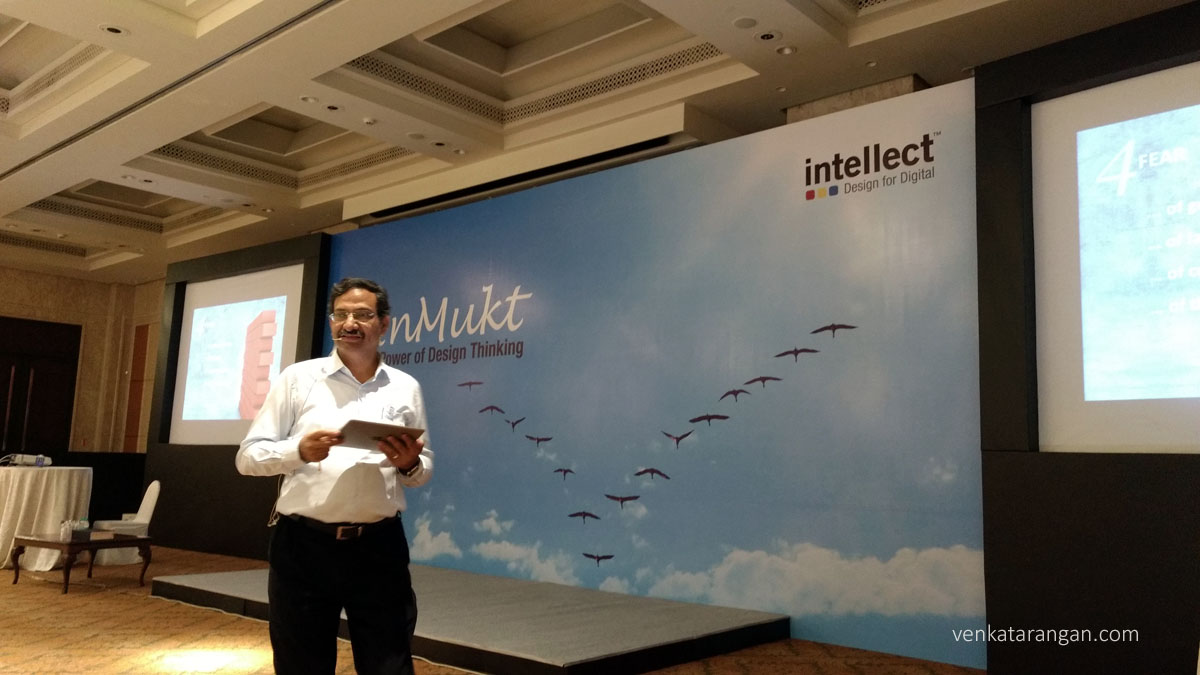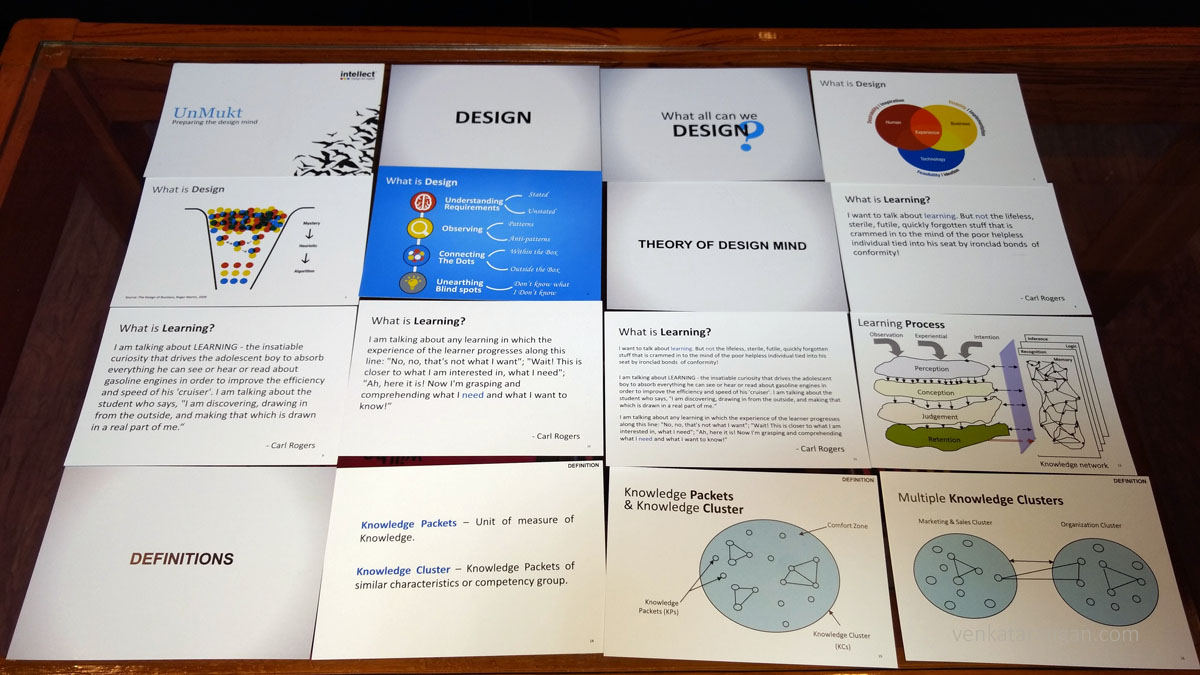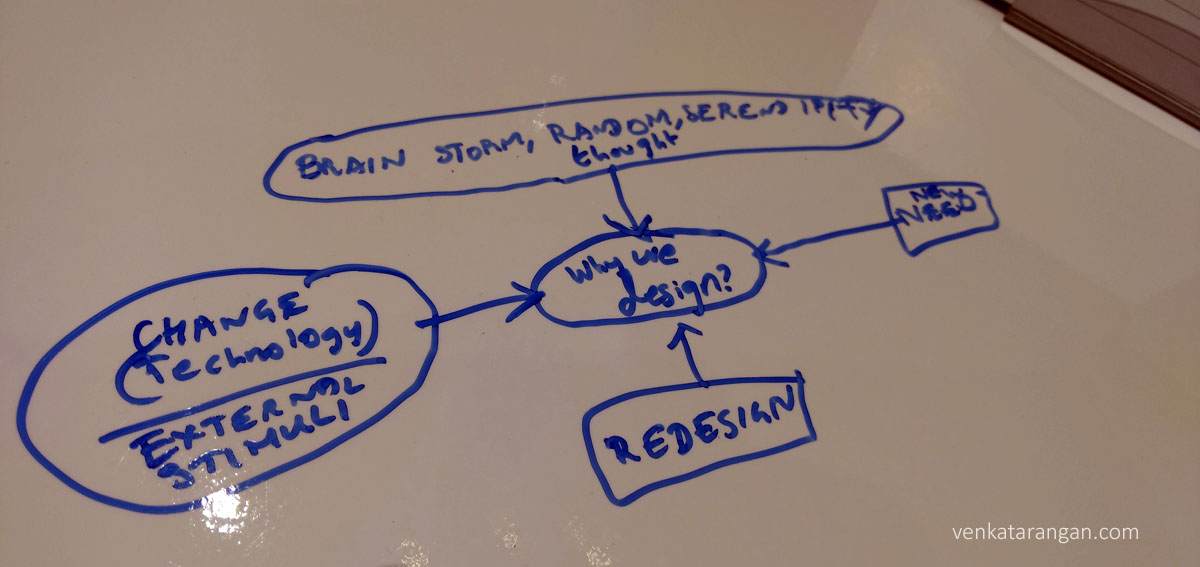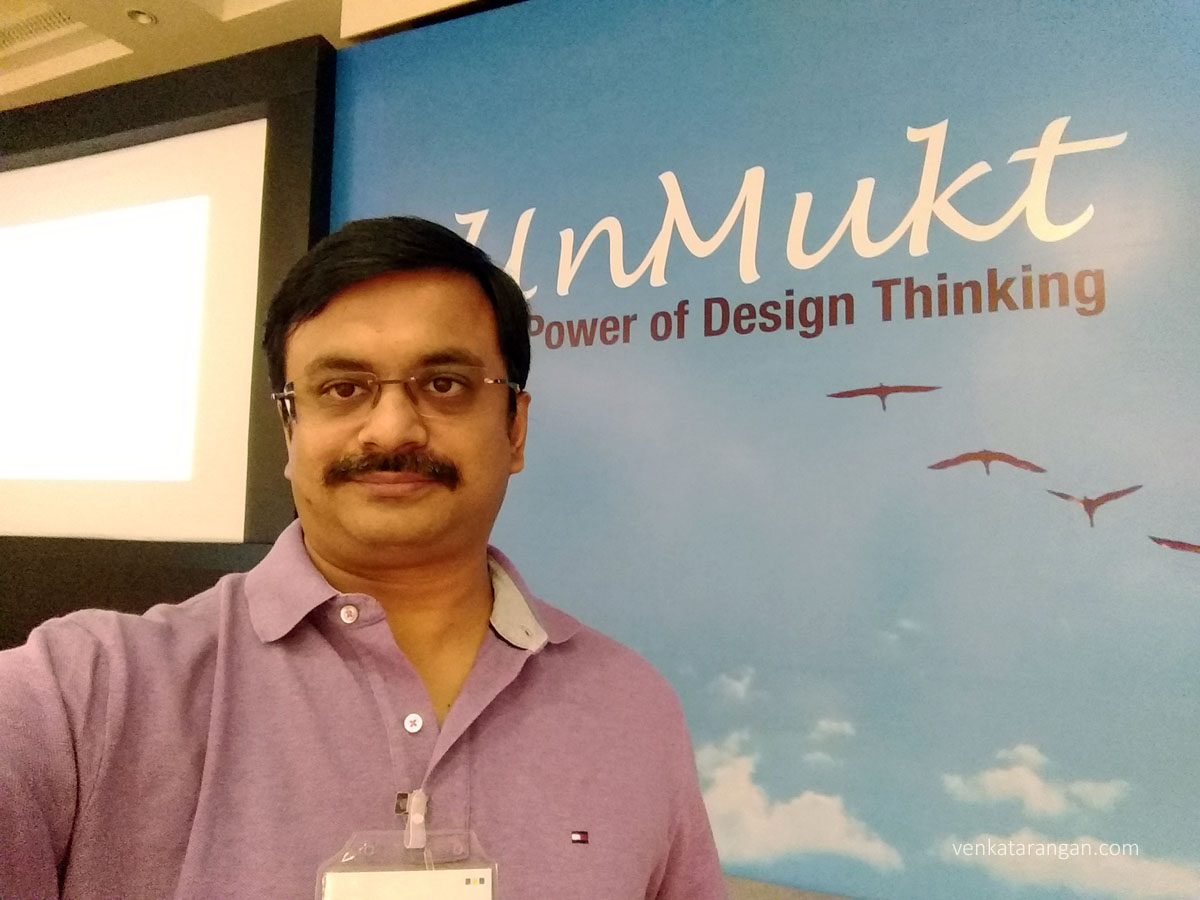Mr Arun Jain is one of the business leaders in Chennai that I admire and had the opportunity of listening to a few of his talks. As a founder of Polaris Labs and now Intellect Design Arena he has built successful organisations. So when I saw he was conducting a one-day workshop on “Design Thinking” this Saturday in Chennai I registered immediately. The event was titled “UnMukt” the Hindi word meaning Unleashing (the potential). Oh Boy, I am glad I came for the event, it was insightful and thought-provoking.
Power of Design
He started with 3 main examples to highlight the power of Design, and answer the question of what can be designed and to what extreme we can push it.
Cue Cards – What all can we design?
What is Design Thinking?
- Technology the word originated only in 1920, before that there were only techniques
- The customer gives requirements based on the past. Change requests come up because you not taking into account customers’ unstated needs
- Design thinking is never an individual exercise. It’s a group activity. That’s the only way you will see the blinds spots that need to be spotted
- When you travel to many cities, it will trigger new thoughts, and you will see blind spots due to the exposure
- For example in a seminar doesn’t publish the agenda, you will not have spontaneous ideas or have an opportunity to see the blind spots. Corridors discussion will identify it, and non-published agenda will foster it. For me, blind spots are spotted in meditation sessions
- Imagination is a critical or unique feature of humanity as a species. We don’t have any of the bests – we can’t swim faster, run faster, hear more, see more, or smell more but we still rule the world
- The design mind is one which is curious
- There are six knowledge clusters in every organization – Human Resources, Customer Facing, Finance, Product Development, Execution & Operations, Branding & Marketing. The mindset required for Design Thinking happens when we have people moving between knowledge clusters, it happens when team rotation is done
- Knowledge is given by educational institutions, the industry has to give skills
What is Design?
What is Learning?
SEPIA, the five drivers of Design
- Something gets done regularly in an organization only when it gets boring. Don’t change often. It takes five years for something to get institutionalized in an organization. Otherwise, we are killing it without giving it a chance. Keep asking the same question multiple times, in an interview ask the developer three, or four times only then blind spots about him/her will emerge
- In dialogue, both parties must listen and not be focused on telling their views only. Discussion, the word origin is from conflicts
- Even if SEPIA is there, there are five frictional forces that stop it – doubt, ego, conflict, anger & fear. You can remember them as DECAF
- When you feel vulnerable your brand works ten times faster. You learn more. When you force yourself to unlearn, you make yourself vulnerable
- When I was in Nucleus and then changed it to Polaris brand, I made myself vulnerable, more possibilities were in front of me. Same thing when I demerged Intellect from Polaris. Demerger generally goes against market expectations, but it gives an opportunity for each unit to focus on its strength. Create your own vulnerability, Adobe got out from selling software licenses to selling subscriptions; only the paranoid survive
- Appreciation – how many times you have written emails to your customer appreciating his work? Each of us has appreciation needs or appreciation hunger. Your letter has to be genuine, honest and to the point
- Limited Beliefs. When someone says you are not good at something, especially at the age below 13, you will be limiting yourselves to that throughout your life. They are capacity holders. We generally want to avoid failures. Similarly, these hold back a company, you start believing it across the company
This was followed by the playing of a scene from the Hindi film “Bawarchi” where the cook (Rajesh Khanna) manipulates the owners (the younger brothers of the house) into taking important decisions while making them believe it’s their own though. Arun explained the learning from the clip to be as “Servant leadership. Management vocabulary here is empowerment. I don’t get empowerment is a common complaint. Think of it, no one can give it to you, you have to take it, it has to be taken.”.
5 Whys
- In organisations we forget the power we already have, it’s in our mind that’s limiting. In design thinking, you take authority and influence
- When you are heading a design thinking session, you need to turn all the buts to ands. “Yes and” should be said instead of “Yes but”. A But stops the other person’s conversion, an and builds on top of it
- You should work like a cartographer, someone can who can turn the entire world into a sheet of paper, that is a skill. Then you need to get into a detective mindset, that is expertise. Then as a reporter, ask the right questions and then present the findings in easy to digest way – don’t pass judgement, lastly, you need to translate all this into a readable format
- Instead of thinking about how to reduce attrition, instead, we should think about how we can increase retention. Your mind will start to work differently
- At this stage of Design Thinking, we need to define the problem. That’s where Toyota’s why chain (5 whys) comes into use. In the 1980s value of the automobile industry was in the repair garages, they were bigger than manufacturing. Toyota with its vastly improved quality of cars changed that
- An idea should not be a personal idea, its focus is to solve the problem only and not ownership. The clustering of ideas will make the team collectively own the idea.
From his experience
- A typical movie of 120 minutes has sixty scenes of an average of two minutes. All scenes can’t be giving same feeling/mood. You need to have variations in a movie, similarly, you need to make your presentations. For doing one brochure for a product it took me three months
- As an entrepreneur myself straight without working as a subordinate, I tend to answer immediately when a question is posted to me. There is no need. I can say I don’t know the answer I will work on it and come back. That freed me and gave me a lot of energy to work on. That is a better answer. If a problem is so simple it would have been handled at the manager level, it wouldn’t have come to me
- Six-people teams are more effective
- Humans are knowledgeable in inorganic chemicals but are not able to do organic chemicals. We know the chemistry is carbon, hydrogen & oxygen but we can’t make organic compounds. That’s why we need oil. If we solve this we will solve the food problem. That’s why teams chemistry is important, think of the benzine structure
- The difference between two similar products say iPhone and Samsung phone is just 2%, the rest 98% is the same. That’s why we need design thinking, role play environments are useful, but it takes time for people to adopt
- Any marketing genius will tell you that you need to create your own vocabulary to have your product/service stand out in the crowd. Instead of saying “Account Processing done faster” you can say “Accelerating the process”, better still you can say “XAP technology” for Axlerated Account Processing.
- Lastly, 3 magic words you need to remember in your life are “I DON’T KNOW”!






Really nicely summarized. Shows the depth of your understanding. I work with Arun and have taken design thinking training. You are now ready to train. Rajesh Kuppuswamy
Beautifully summary.